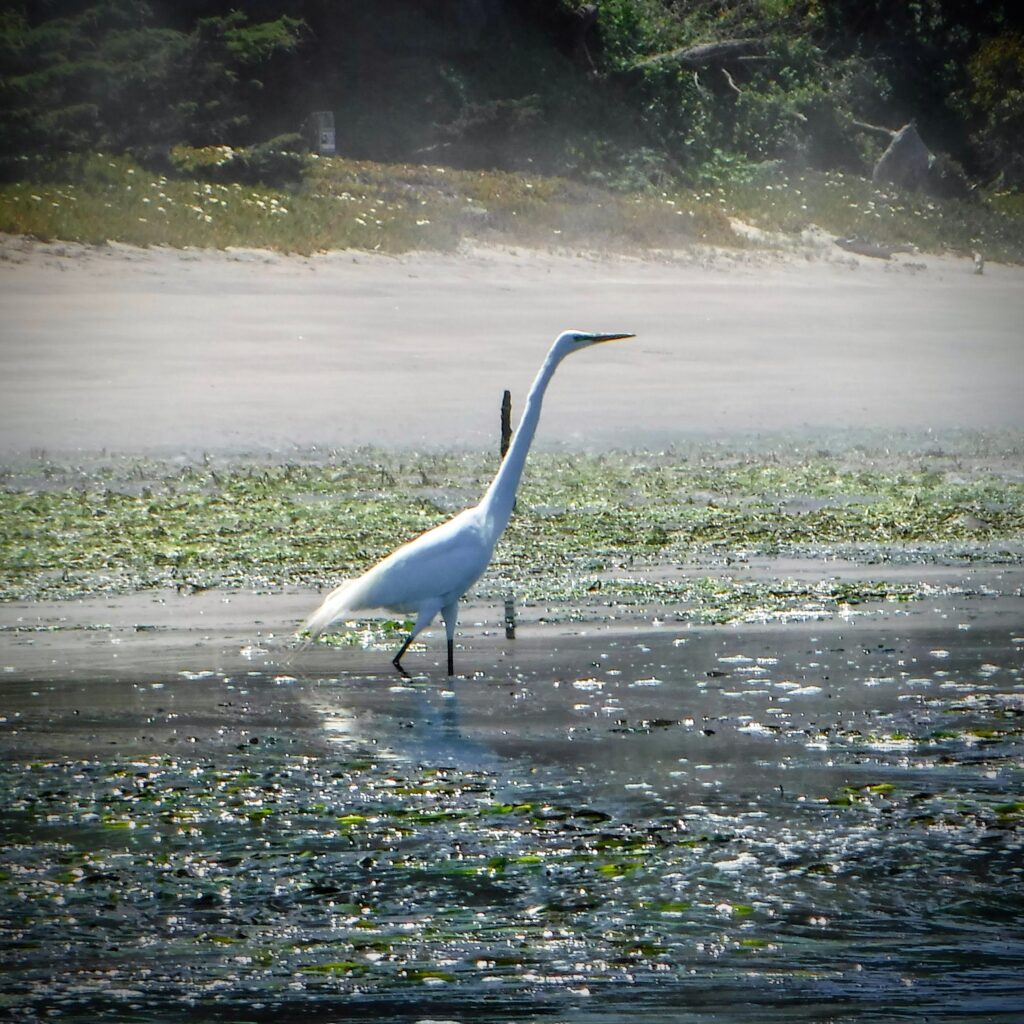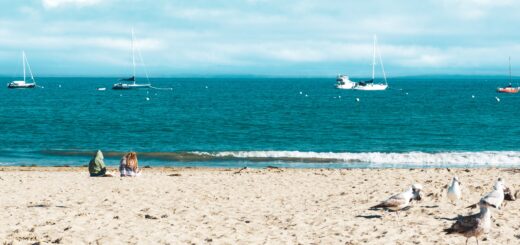Elkhorn Slough Photographs
Enjoy some additional photographs from my class’s kayaking adventure in Elkhorn Slough! I also snapped a few images from a trail overlooking the northern section of the estuary.
I find that many students enjoy taking pictures during field trips and activities. And some of them are really great phtotographers! I encourage those that are interested to bring along a good camera. All of these photos are mine, but perhaps I’ll share some student images in a future post.
Low Tide

Looking to the northern part of the estuary. At low tide, the water almost completely leaves this area. Mudflats are exposed. Many species of birds take advantage of these times to look for food. You can often spot marbled godwits, whimbrels, great blue herons, and gulls.
Sanderlings

Sanderlings (Calidris alba) are another common visitor to the mudflats. These small birds are often seen in coastal wetlands and on beaches. They eat tiny invertabrates living the sand. If you see them erratically running around, they’re probably trying to find a meal. Surprisingly, the only way they find their food is by stabbing their beaks into the sand and grabbing whatever might be there!
Coastal Bush Lupine

Coastal bush lupine (Lupinus arboreus) is sometimes called the yellow bush lupine. It lives many in coastal California habitats. This includes near wetlands and marshes, in sand dunes, or in coastal sage scrub. Flowers range from bright yellow–like this individual–to a bright purple. Or they can be a very pretty blend. Lupines like this species help keep soils healthy by adding nitrogen.
Western Fence Lizard

A western fence lizard (Sceloporus occidentalis) suns itself on a rock. You might know these little lizards as “blue belly” lizards. They’re another species native to many parts of California, even urban backyards! If you find one, don’t grab it by the tail. As a defense, they can detach their tails! The tails will regrow, but this takes alot of energy.
Great Egret

A great egret (Ardea alba) searches for food among the eel grass beds. They have awkwardly long necks. Long black legs and pointed yellow beaks make this species easy to identify. Other species of egrets also live in these habitats, but they aren’t as big.
Southern Sea Otter

Everyone’s “must-see” animal…the southern sea otter (Enhydra lutris nereis)! The Marine Mammal Protection Act is a federal law. It says that you are not allowed to approach or harrass sea otters or any other type of marine mammal. So, no close-up pictures of these guys on this trip.



